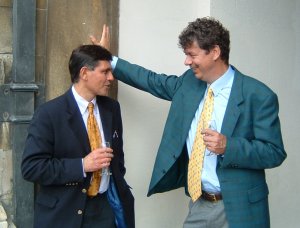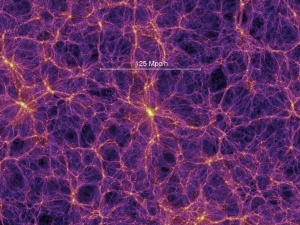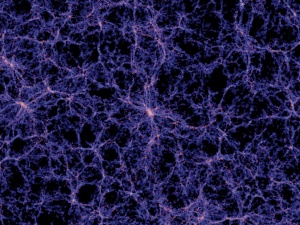2005 Dannie Heineman Prize for Astrophysics awarded to Simon White

On March 2 the American
Institute of Physics announced that the 2005 Dannie Heineman Prize for
Astrophysics is awarded jointly to Simon White (on the right in the
image above), Director at the Max-Planck Institute for Astrophysics in
Garching, and George Efstathiou, Director of the Institute of
Astronomy at the University of Cambridge. White and Efstathiou are
cited for their pioneering research, both together and separately,
into the evolution of structure in the Universe from the earliest
times to the present epoch, as examples of outstanding work in the
field of astrophysics. The Heinemann Prize is awarded annually by the
AIP together with the American Astronomical Society in recognition of
mid-career achievement in any area of astrophysics without regard for
nationality or country of residence.
The last few years have seen the establishment of a standard picture
for the development of all structure in our Universe. The initial
explosion, the Big Bang, was almost smooth and featureless, but small
departures from perfect regularity were produced by quantum processes
at very early times. These were amplified by gravity as the Universe
expanded and aged until eventually they collapsed back on themselves
to form the galaxies, the galaxy clusters and the larger structures
which fill the Universe today. White and Efstathiou have contributed
major parts of this picture over the last three decades, using the
largest available computers to demonstrate how small fluctuations
emerging from the first instants can develop into the rich, complex
and evolving structures that modern astronomical telescopes are
mapping. Their work suggests that all structure in our Universe may
ultimately have grown from random quantum fluctuations of the
vacuum. In a very real sense, we, and everything which surrounds us,
may have been born from nothing.


Images from the largest simulation of cosmic structure formation
ever carried out show predictions for the distributions of mass
(above) and galaxy light (below) In a region of the Universe about
one billion light years across. This calculation used a month of CPU
time on the supercomputer at the Max-Planck Society's Garching Supercomputer
Centre (credit V. Springel).
|

